Gunter Van Craen - CDIO at Bekaert - Embracing Digital Transformation
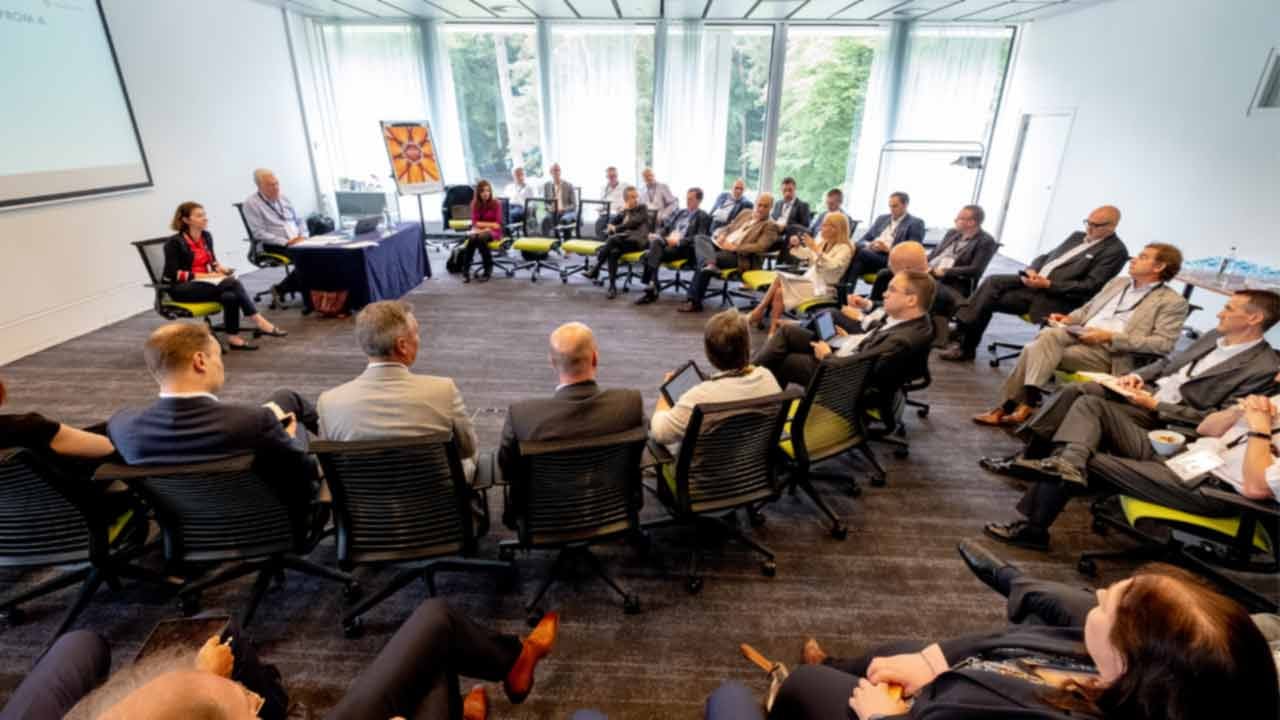
Find out more:
.png)
Poland 5-12-25 Invitation Only Physical Polish
Liderzy biznesowi pokładają ogromne nadzieje w agentach AI, widząc w nich szansę na zbudowanie przewagi konkurencyjnej. Rzadko jednak pada zasadnicze pytanie: czy cyfrowy fundament organizacji – dane, integracje, systemy – jest na to gotowy? Czy obecna strategia integracji wspiera ambicje biznesowe, czy je spowalnia? Podczas naszego biznesowego śniadania CIONET, organizowanego we współpracy z Digia (Finlandia) i Savangard, przyjrzymy się trendom, które dziś definiują architekturę i integracje w Europie i w Polsce. W gronie ok. 20 liderów IT porozmawiamy m.in. o tym: Czy strategia integracji danych i aplikacji powinna uwzględniać przyszłe zastosowania AI? Jak przekształcić kluczowe dane w powtarzalne „data products”, które przyspieszają dostarczanie wartości biznesowej? W jakim kierunku ewoluują platformy integracyjne – iPaaS i API Management? Cloudification - jakie lekcje wynoszą firmy, które przeszły takie transformacje z legacy do nowoczesnej integracji w chmurze? Jak zorganizować „integration core team”, który wzmacnia rozproszone i coraz bardziej niezależne zespoły technologiczne? Spotkanie odbędzie się w kameralnej atmosferze Centrum Praskiego Koneser (CHPTR) i będzie prowadzone w formule dyskusyjnej – z myślą o praktykach zajmujących się modernizacją architektury, integracją systemów i przygotowaniem IT na kolejne lata.
Read More.png)
Poland 8-12-25 Invitation Only Physical Polish
W wielu firmach monitoring wydaje się działać poprawnie, dopóki nie spojrzymy na to, czego nie widać: luki między narzędziami, brak wspólnego obrazu usług, opóźnienia między zdarzeniem a decyzją. W takiej sytuacji trudno wcześnie wykryć degradację, oszacować wpływ incydentów na klientów czy przewidzieć ryzyka, które uderzają w biznes, zanim IT zdąży zareagować. Podczas CIONET Executive Roundtable, którego partnerem jest Spluk, porozmawiamy o tym, ile organizacje tracą na rozproszonym monitoringu i jak wiele można zyskać, gdy staje się on spójnym systemem, a nie zbiorem narzędzi. Zastanowimy się, jak połączyć dane z aplikacji, infrastruktury i biznesu w jeden obraz, który realnie wspiera szybkość reakcji, stabilność usług i jakość decyzji.
Read More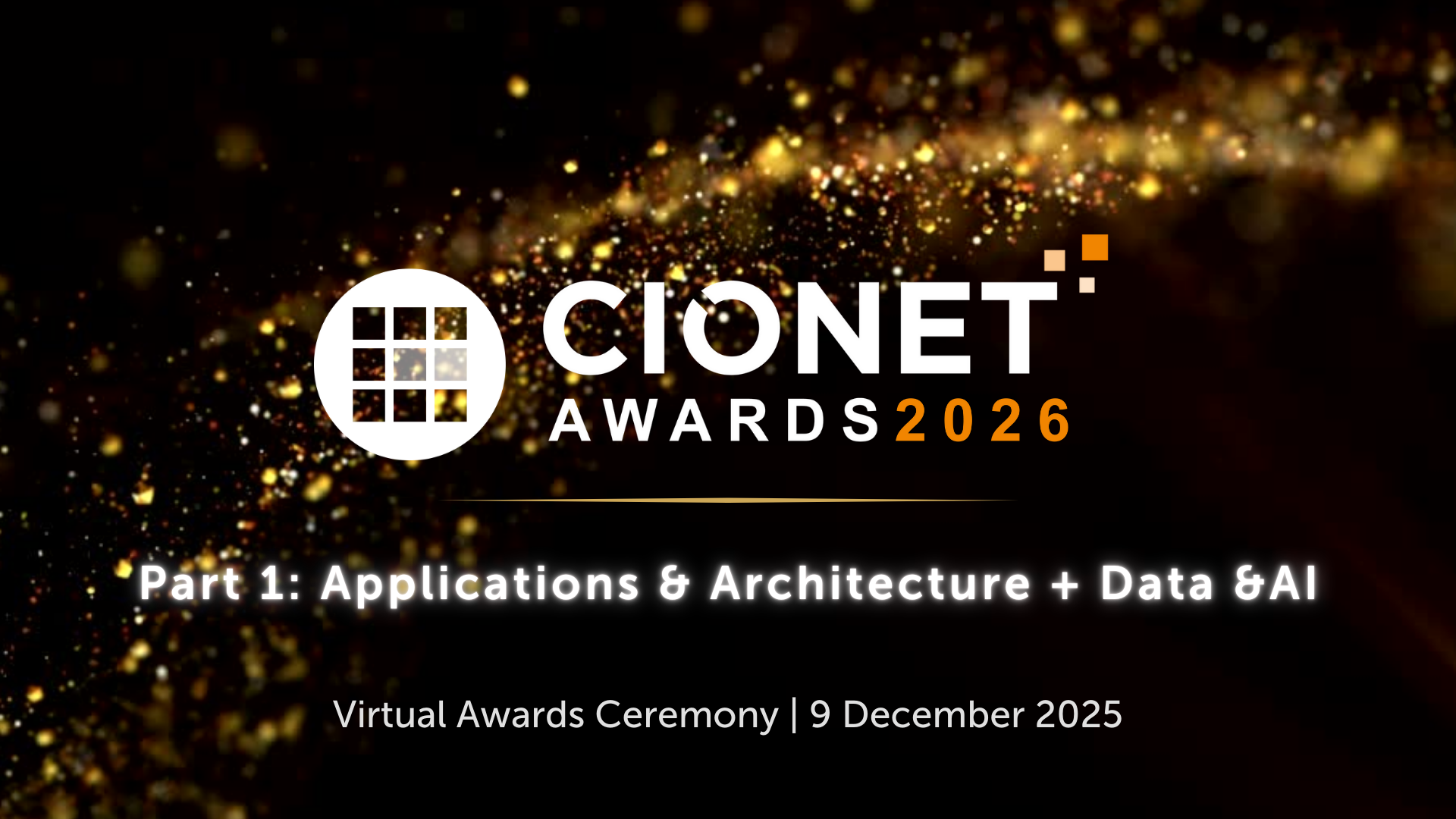
International 9-12-25 Public Virtual english
The CIONET Awards 2026: Part 1, the premier celebration of excellence in digital mission and leadership. During this event the spotlight falls on two of the most critical arenas in modern enterprise: Applications & Architecture and Data & AI. Prepare for a dynamic session where each nominee will present their groundbreaking achievements.
Read More.png)
Brazil 9-12-25 Country Members Physical portuguese
Cerimônia de Premiação CIONET BRASIL 2025.Reconheceremos as Empresas Líderes em Excelência Tecnológica em Projetos e os Líderes Digitais do Ano 2025.Quando?09 de Dezembro de 2025A partir das 18:30Onde?Sheraton São Paulo WTC HotelInscrições online: https://www.cionet.com/pt-br/events/pr%C3%AAmios-cionet-brasil-2025
Read More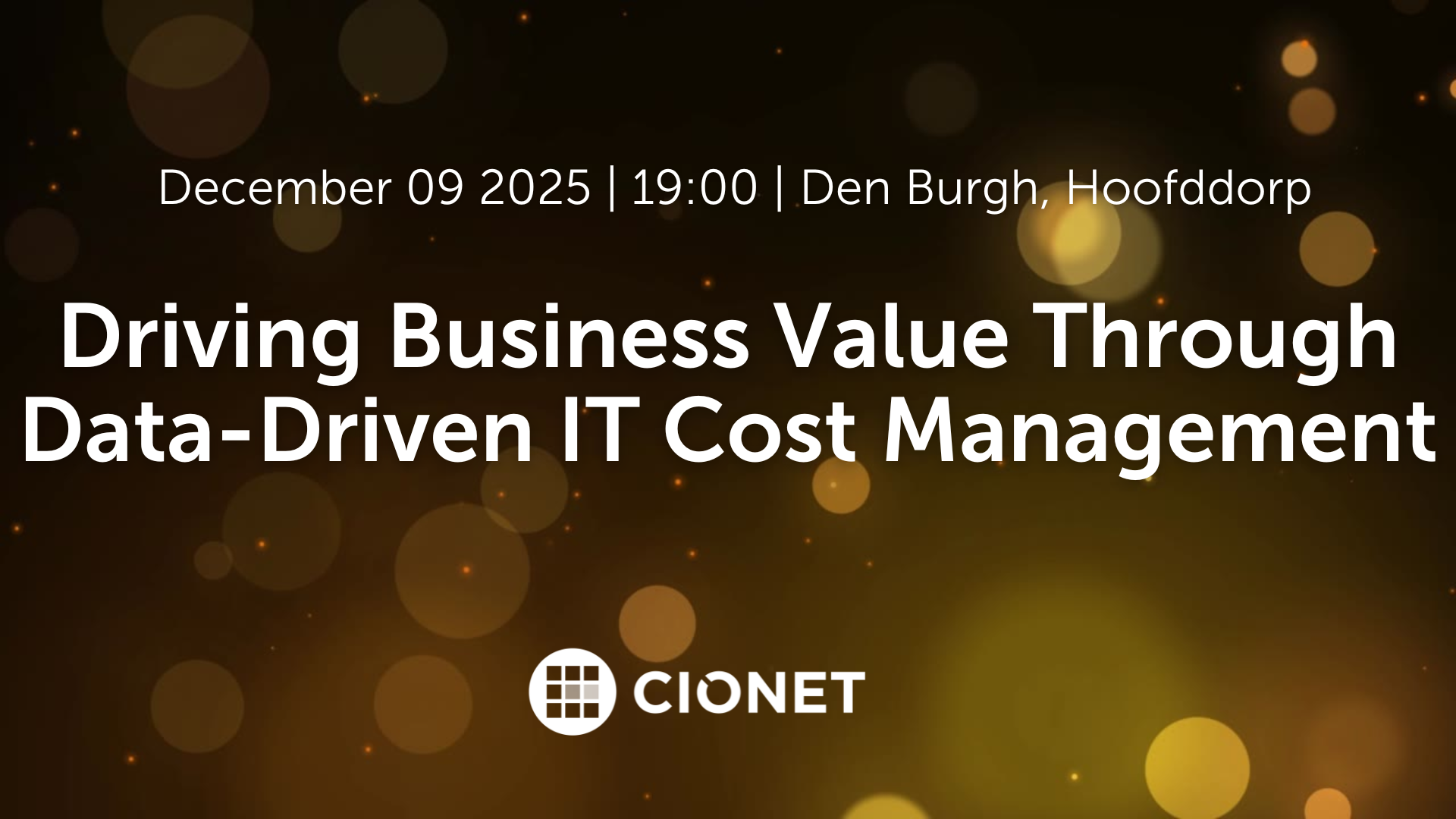
Netherlands 9-12-25 Invitation Only english
At this exclusive CIONET Executive Roundtable, hosted in partnership with It’s Value, we will explore how Technology Business Management (TBM) principles can help CIOs and IT leaders make data-driven financial decisions that drive measurable business value.
Read MoreNetherlands 9-12-25 Invitation Only Physical english
Digital transformation and ongoing economic uncertainty are intensifying the pressure on IT leaders to do more with less. In this environment, gaining precise control over IT costs—while continuing to deliver effective, efficient, and innovative technology operations—is more critical than ever. At this exclusive CIONET Executive Roundtable, hosted in partnership with It’s Value, we will explore how Technology Business Management (TBM) principles can help CIOs and IT leaders make data-driven financial decisions that drive measurable business value. Key Discussion Themes Turning data insights into smarter IT investment decisions Setting priorities for cost optimisation and maximising ROI Quantifying and communicating the business value of IT initiatives Evaluating the principles of FinOps and the implications of public, private, and hybrid cloud environments for cost management Embedding effective change management to drive adoption and alignment Achieving tangible business outcomes from AI initiatives while maintaining fiscal discipline The evening will also feature a fireside chat with Sunil Anand, Global Head of Technology Business Management at National Grid. Sunil will share practical lessons and key milestones, retracing the National Grid cost management journey. This dinner offers a unique opportunity to: Exchange experiences with peers facing similar challenges Gain insights from TBM experts and industry practitioners Reassess your own IT financial strategy in a relaxed, collegial setting Join us for an evening of insight, discussion, and connection—designed to help you strengthen IT’s role as a true business value driver.
Read More.jpg)
Belgium Dec 4, 2025 Invitation Only Physical english
CIONET is committed to highlighting and celebrating female role models in IT, Tech & Digital, creating a leadership programme that empowers and elevates women within the tech industry. This initiative is dedicated to showcasing the achievements and successes of leading women, fostering an environment where female role models are recognised, and their contributions can ignite progress and inspire the next generation of women in IT.
Read More.png)
International Dec 9, 2025 Public Virtual english
The CIONET Awards 2026: Part 1, the premier celebration of excellence in digital mission and leadership. During this event the spotlight falls on two of the most critical arenas in modern enterprise: Applications & Architecture and Data & AI. Prepare for a dynamic session where each nominee will present their groundbreaking achievements.
Read More
Netherlands Dec 9, 2025 Invitation Only Physical english
Digital transformation and ongoing economic uncertainty are intensifying the pressure on IT leaders to do more with less. In this environment, gaining precise control over IT costs—while continuing to deliver effective, efficient, and innovative technology operations—is more critical than ever. At this exclusive CIONET Executive Roundtable, hosted in partnership with It’s Value, we will explore how Technology Business Management (TBM) principles can help CIOs and IT leaders make data-driven financial decisions that drive measurable business value. Key Discussion Themes Turning data insights into smarter IT investment decisions Setting priorities for cost optimisation and maximising ROI Quantifying and communicating the business value of IT initiatives Evaluating the principles of FinOps and the implications of public, private, and hybrid cloud environments for cost management Embedding effective change management to drive adoption and alignment Achieving tangible business outcomes from AI initiatives while maintaining fiscal discipline The evening will also feature a fireside chat with Sunil Anand, Global Head of Technology Business Management at National Grid. Sunil will share practical lessons and key milestones, retracing the National Grid cost management journey. This dinner offers a unique opportunity to: Exchange experiences with peers facing similar challenges Gain insights from TBM experts and industry practitioners Reassess your own IT financial strategy in a relaxed, collegial setting Join us for an evening of insight, discussion, and connection—designed to help you strengthen IT’s role as a true business value driver.
Read More.jpg)
Italy Dec 10, 2025 Invitation Only Physical italian
Questa roundtable esclusiva offrirà a CIO, CISO e Leader di ITOps/Engineering un confronto diretto per individuare le migliori strategie di Innovazione che, attraverso l'observability, ottimizzino il Return of Investment.
Read More.jpg)
Belgium Dec 11, 2025 Country Members Physical english
Imagine being able to monitor, simulate, and optimise an entire city, factory, or supply chain in real time. Next-generation digital twins are making this vision a reality, transforming how we manage and understand complex systems. By creating dynamic virtual replicas of physical assets and processes, digital twins allow organisations to predict issues, optimize performance, and make data-driven decisions with unprecedented accuracy.This event will explore how digital twins are being used across industries to revolutionize the way we operate and maintain large-scale, intricate systems—whether it’s the infrastructure of a smart city, the efficiency of a factory floor, or the resilience of global supply chains.Examples of Digital Twins in Action:Smart Cities: Urban planners can use digital twins to simulate traffic flow, monitor energy usage, or predict the impact of weather events on infrastructure. This enables cities to optimize resources and improve the quality of life for their citizens.Factories of the Future: Manufacturing plants are leveraging digital twins to monitor equipment in real time, prevent downtime, and optimize production lines. With predictive analytics, factories can avoid costly breakdowns and improve overall efficiency.Supply Chain Management: Complex supply chains, spanning continents and industries, can be modeled as digital twins to track shipments, simulate disruptions, and optimize logistics. Businesses can reduce inefficiencies and respond faster to market demands.Key Themes:Real-Time Monitoring and Simulation: How digital twins provide real-time insights into complex systems, allowing for dynamic response and optimization.Predictive Power: Leveraging AI and data analytics, digital twins help organisations predict and mitigate issues before they happen, from equipment failures to supply chain bottlenecks.Scalability Across Ecosystems: Digital twins aren’t limited to individual assets—learn how they can be scaled across entire ecosystems like smart cities or global supply chains for maximum impact.Building Trust and Security: With digital twins handling critical infrastructure and sensitive data, what are the security and governance frameworks needed to ensure trust in these virtual systems?Why You Should Attend:Next-generation digital twins are no longer just a concept—they are revolutionizing industries by offering a new way to manage complexity. Whether you’re looking to optimize a city, factory, or supply chain, this event will provide practical insights into how digital twins can transform your organisation’s operations and drive future innovation.
Read More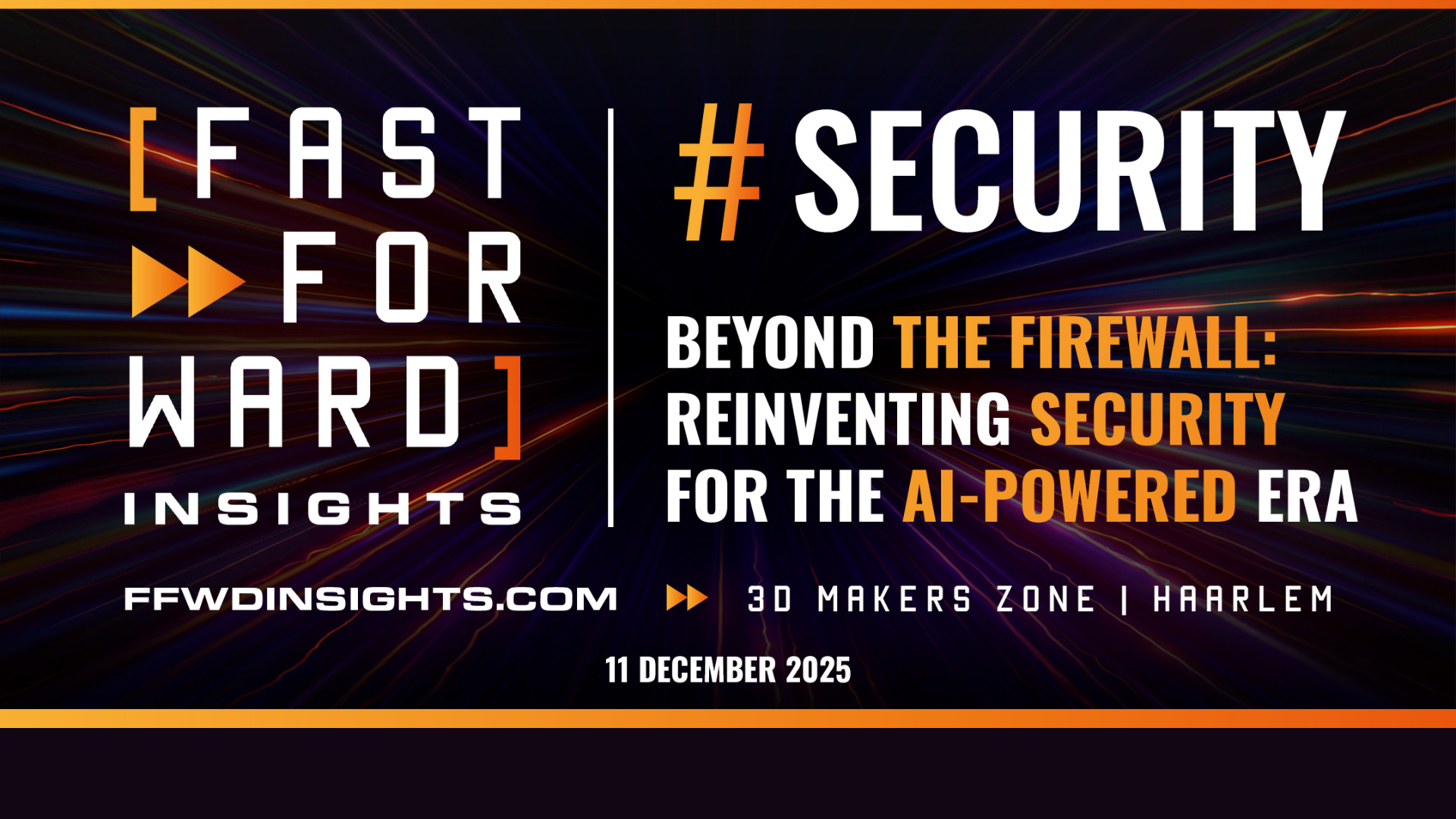
Netherlands Dec 11, 2025 Invitation Only Physical dutch
Navigating tommorrow's threatscape: Cybersecurity insights for digital leaders. Op 28 november in de 3D Makers Zone in Haarlem.
Read More.jpg)
Belgium Dec 4, 2025 Invitation Only Physical english
CIONET is committed to highlighting and celebrating female role models in IT, Tech & Digital, creating a leadership programme that empowers and elevates women within the tech industry. This initiative is dedicated to showcasing the achievements and successes of leading women, fostering an environment where female role models are recognised, and their contributions can ignite progress and inspire the next generation of women in IT.
Read More.png)
International Dec 9, 2025 Public Virtual english
The CIONET Awards 2026: Part 1, the premier celebration of excellence in digital mission and leadership. During this event the spotlight falls on two of the most critical arenas in modern enterprise: Applications & Architecture and Data & AI. Prepare for a dynamic session where each nominee will present their groundbreaking achievements.
Read More
Netherlands Dec 9, 2025 Invitation Only Physical english
Digital transformation and ongoing economic uncertainty are intensifying the pressure on IT leaders to do more with less. In this environment, gaining precise control over IT costs—while continuing to deliver effective, efficient, and innovative technology operations—is more critical than ever. At this exclusive CIONET Executive Roundtable, hosted in partnership with It’s Value, we will explore how Technology Business Management (TBM) principles can help CIOs and IT leaders make data-driven financial decisions that drive measurable business value. Key Discussion Themes Turning data insights into smarter IT investment decisions Setting priorities for cost optimisation and maximising ROI Quantifying and communicating the business value of IT initiatives Evaluating the principles of FinOps and the implications of public, private, and hybrid cloud environments for cost management Embedding effective change management to drive adoption and alignment Achieving tangible business outcomes from AI initiatives while maintaining fiscal discipline The evening will also feature a fireside chat with Sunil Anand, Global Head of Technology Business Management at National Grid. Sunil will share practical lessons and key milestones, retracing the National Grid cost management journey. This dinner offers a unique opportunity to: Exchange experiences with peers facing similar challenges Gain insights from TBM experts and industry practitioners Reassess your own IT financial strategy in a relaxed, collegial setting Join us for an evening of insight, discussion, and connection—designed to help you strengthen IT’s role as a true business value driver.
Read More.jpg)
Italy Dec 10, 2025 Invitation Only Physical italian
Questa roundtable esclusiva offrirà a CIO, CISO e Leader di ITOps/Engineering un confronto diretto per individuare le migliori strategie di Innovazione che, attraverso l'observability, ottimizzino il Return of Investment.
Read More.jpg)
Belgium Dec 11, 2025 Country Members Physical english
Imagine being able to monitor, simulate, and optimise an entire city, factory, or supply chain in real time. Next-generation digital twins are making this vision a reality, transforming how we manage and understand complex systems. By creating dynamic virtual replicas of physical assets and processes, digital twins allow organisations to predict issues, optimize performance, and make data-driven decisions with unprecedented accuracy.This event will explore how digital twins are being used across industries to revolutionize the way we operate and maintain large-scale, intricate systems—whether it’s the infrastructure of a smart city, the efficiency of a factory floor, or the resilience of global supply chains.Examples of Digital Twins in Action:Smart Cities: Urban planners can use digital twins to simulate traffic flow, monitor energy usage, or predict the impact of weather events on infrastructure. This enables cities to optimize resources and improve the quality of life for their citizens.Factories of the Future: Manufacturing plants are leveraging digital twins to monitor equipment in real time, prevent downtime, and optimize production lines. With predictive analytics, factories can avoid costly breakdowns and improve overall efficiency.Supply Chain Management: Complex supply chains, spanning continents and industries, can be modeled as digital twins to track shipments, simulate disruptions, and optimize logistics. Businesses can reduce inefficiencies and respond faster to market demands.Key Themes:Real-Time Monitoring and Simulation: How digital twins provide real-time insights into complex systems, allowing for dynamic response and optimization.Predictive Power: Leveraging AI and data analytics, digital twins help organisations predict and mitigate issues before they happen, from equipment failures to supply chain bottlenecks.Scalability Across Ecosystems: Digital twins aren’t limited to individual assets—learn how they can be scaled across entire ecosystems like smart cities or global supply chains for maximum impact.Building Trust and Security: With digital twins handling critical infrastructure and sensitive data, what are the security and governance frameworks needed to ensure trust in these virtual systems?Why You Should Attend:Next-generation digital twins are no longer just a concept—they are revolutionizing industries by offering a new way to manage complexity. Whether you’re looking to optimize a city, factory, or supply chain, this event will provide practical insights into how digital twins can transform your organisation’s operations and drive future innovation.
Read More
Netherlands Dec 11, 2025 Invitation Only Physical dutch
Navigating tommorrow's threatscape: Cybersecurity insights for digital leaders. Op 28 november in de 3D Makers Zone in Haarlem.
Read MoreThe Buyer’s Guide to IT Transformation
Find the right EAM/SPM tool to support your IT transformation with this comprehensive buyer's guide. Know what to look for when comparing different solutions on the market, explore common use cases, and get familiar with the seven core capabilities of successful EAM/SPM platforms.
“All business is IT—all IT is business.” Today, as business success is increasingly defined by the speed of innovation, there’s more truth than ever to Gartner's findings that all business is IT—all IT is business. As the world becomes more digital, and customer expectations change at ever faster rates, your IT needs to change as well—to incorporate the new technologies that will make your enterprise stand out from the competition.
How, though, can you ensure your IT portfolio is in line with your business objectives? Increasingly, companies are turning to support their enterprise architecture management (EAM) and strategic portfolio management (SPM) practices with made-for-purpose software tools that can handle the massive complexity inherent in today’s IT. A tool-based approach enables you to visualize the cost, complexity, and feasibility of a proposed IT change, and how it relates to your vision for the future.
As will be explained in the competitive landscape overview, integrating the enterprise architecture management (EAM) and strategic portfolio management (SPM) disciplines significantly increases the number and quality of IT insights. According to Gartner:
There are tools that span both practices, and it’s important to consider both. That’s why this guide often addresses both enterprise architecture management and strategic portfolio management “EAM/SPM”.
This guide is designed to help you find the right EAM/SPM tool to support your IT transformation endeavors. We will help you understand what an EAM/SPM platform does best, figure out what capabilities you want, and justify your choice within the scope of your organization’s needs and budget. It is divided into five sections.
First, we’ll help you understand what enterprise architecture management (EAM) and strategic portfolio management (SPM) platform buyers are typically looking for. We’ll then explore some of the key differences between the solutions available on the market. After that, we’ll take a look at some common EAM/SPM use cases and probe deeper into the seven core capabilities you’ll want to have for use across your transformation projects. Finally, we’ll give you some tips to begin your EAM/SPM journey—and move toward the choice of a platform.
With so many competing tools and providers on the market, identifying the solution that will best meet your enterprise’s needs can be difficult. From our experience, however, there are several things that users seeking IT transformation are typically after.
An important step in finding the right EAM/SPM tool is assessing the strengths and weaknesses of the different players on the market. This process is often informed by past frustrations: many firms come to EAM/SPM after struggling for years to inventorize their IT, track projects and prioritize investments with PowerPoints or disconnected spreadsheets. Modeling tools, such as MS Visio, are another attempt to get visibility into the IT landscape, but they’re also incapable of handling large and diverse inputs of data that range from strategies to technology solutions, to investments, and KPIs.
The need to gather high quality data from a range of sources means that integration and data management are a key part of the picture. This leads some firms to look to business intelligence solutions, which often come with powerful data management capabilities. These tools, however, lack many of the core architecture capabilities of EAM/SPM itself—which means they need to be developed and maintained in-house, driving up costs and diverting attention from what matters most: building a thriving business.
You may also be enticed by software in other EAM/SPM “adjacent” markets, such as IT service management, configuration management database, or IT asset management. Often vendors of these products claim to cover EAM/SPM too—and if you’ve already installed their software for other uses, giving this a try could seem expedient and cost-efficient. For similar reasons, some users find it tempting to “sew together” EAM/SPM capabilities from multiple products they’ve already acquired.
If you’re considering either of these paths, we’d recommend you challenge vendors on the seven core capabilities discussed in the next section—and consider the advantages of having them natively integrated in one product. A decision to skimp on a made-for-purpose EAM/SPM solution won’t seem so cost-effective down the line if this mixed bag approach fails to deliver, and your enterprise is forced to start anew. If you’ve decided—wisely—to pursue an EAM/SPM-specific solution, you still have a choice between solutions geared toward each discipline and those that integrate the two into a single product. EAM-specific tools will give you a single source of truth—to simplify your IT landscape, understand the implications of IT change, and anticipate system disruptions before they do damage to your business. SPM-specific tools will help you connect the dots between IT change and your strategic goals—a process accomplished through portfolios that link all elements of your IT architecture to a clear functional purpose.
Although both types of tools provide value as stand-alone products, we strongly recommend a solution that incorporates both. Enterprise architecture management, after all, is most impactful when it’s used as a foundation for SPM-driven change impact discoveries. And strategic portfolio management works best when its portfolios are based on the interdependencies identified by EAM—enabling the enterprise to more boldly pursue business opportunities, defend its market position, and build greater resilience to operational risks.
This function pulls together information from various sources to build an iterated business strategy. The point is to generate a clear line of sight between the organization’s high-level vision and its implementation. Business strategy development includes:
Once you’ve built your business strategy, the next step is designing a more detailed operating model. Effectively, this is a road map for changes to your business capabilities, processes, and broader organization. This includes:
Today’s rapidly changing business environment requires agile delivery of IT services and products—with transparency, analytics, and feedback from stakeholders at all levels of the organization. An EAM/SPM approach to agile transformation offers:
This function helps enterprises organize, and optimize, their IT to set the pace for change. Creating a tightly integrated IT portfolio reduces planning errors, helps stakeholders collaborate, and provides transparency that helps users avoid conflicts. IT portfolio management includes:
This capability provides the underlying tools needed to ensure effective EA discipline—which in turn leads to greater agility and reduced costs and risks. It includes:
This function helps organizations optimize their IT with an eye toward cutting costs and ensuring new IT investments add value to their business. It includes:
An integral part of aligning business and IT is the management of risk—and achieving greater efficiencies in compliance control. Important capabilities include:
The number of capabilities outlined above may feel overwhelming. The broad scope of enterprise architecture management and strategic portfolio management can certainly be daunting. And, truth be told, there are rare instances of companies that execute fully on all activities. What’s most important is that you view these capabilities as a means to an end: supporting the job that needs to be done today. The job could be planning a cloud migration strategy, positioning the enterprise against cyber threats, or determining how a new technology might advance your business strategy. It doesn’t matter which: once you’ve captured your enterprise architecture as the basis for any of these or other uses, you’ve taken a critical first step that will lay the foundation for other “ends” in the future.
The most common entry point into EAM/SPM is application rationalization. Many companies want to cut costs and get rid of the clutter. A logical next step is to better understand the technologies supporting the application portfolio—to see where it’s possible to rationalize the technology portfolio, and standardize to increase agility. From there, many move on to a more critical examination of their business capabilities and processes before turning to their project and product portfolios: most, in other words, attempt to first get transparency.
It's important to keep in mind, of course, that every enterprise is different. Some may begin their journey with a very specific goal; others may find it helpful to start with basic questions, such as: “What is in our application portfolio?”; “Who are our technology owners?”; or “What is our business IT alignment?” For companies with little or no prior experience in enterprise architecture or strategic portfolio management, it may make sense to seek out a vendor that offers an entry-level solution—one with a just a few functional capabilities, pre-configured views and prescribed data for these sorts of common questions. Tackling the basics will often lead to a desire to ask more complicated questions—say, “How do we realize greater cost efficiencies?” or “How can we make savvier IT investments?” At this point, you’ll likely want to upgrade to a tool with a broader scope of capabilities and more configuration options. Ideally, then, the solution that you start with should offer the ability to scale up as seamlessly as possible.
As we’ve already discussed, EAM/SPM acts like a guardian of IT change—one that helps you simplify your IT landscape and make decisions driven by insights to accelerate your business strategy. But what, exactly, does this mean in practice? A 2020 study by Aite Group, a technology advisory, offers some idea of what you’ll gain with the right product. Its research, based on deployments at 11 large organizations of Alfabet, Software AG’s industry-leading EAM/SPM platform, identified several direct benefits, including cost reductions brought on by the avoidance and elimination of redundant assets, increased purchasing power, decreased project rework, and reduced headcount. Indirect benefits included improved compliance, enhanced enterprise security, improved knowledge propagation, and reduced operational risk.
Users of Alfabet interviewed by Aite’s research team offer a sense of what this means at the individual enterprise level. One noted their organization was on track to reduce application costs by 50%. Others praised the platform for helping their firm “avoid costly technology sprawl” and noted its ability to provide “continuous course corrections,” while channeling investment into the systems and applications that matter most. As one user in the utilities sector put it best: “Here, every project and investment goes through an objective intake process, enabled in Alfabet, in which mission criticality is formally assessed. This way, cool, hyped, or favored technologies don’t take money from what we rely on.” In other words, Alfabet allows this user’s enterprise to cut through the noise and focus on the IT that matters most.
Are you ready to finally take control of your IT? To ensure your IT landscape is agile, cost-efficient, free of risk, and, above all, a driver of business success? If you’re still reading this, we suspect the answer is yes. And we hope this guide has helped demystify the process—to unpack exactly what you want in an enterprise architecture management (EAM) and strategic portfolio management (SPM) platform and how the capabilities embedded in such a tool can prepare your enterprise for such a wide array of transformation projects.
The information in this guide should be of help no matter the EAM/SPM solution you ultimately decide on. That said, we suspect there’s a good chance that Alfabet could be the platform that you’re after—whether you’re a small business looking for a risk-free way to learn what EAM/SPM is all about, or a large organization ready to dive head on into an enterprise-class solution. Whether installed on-premises, or deployed as SaaS, Alfabet will help you invest wisely by optimizing your IT landscape and collaboratively planning for the future. And we’re not the only ones who’ll point you to it: in its 2022 Magic QuadrantTM for Strategic Portfolio Management, Gartner named Software AG as a Leader.
Would you like to learn more about how Alfabet can kick-start your IT transformation journey? Get in touch: we’d be happy to share more of our expertise.
11 Views 0 Likes Read More

Embark on a culinary journey through the ever-evolving world of digital leadership with our third edition of the CIONET Cookbook: Recipes for Digital Success. Unveiling the intricate trilemma faced by today’s Master Chefs, our trailblazing European CIOs address a challenge at the nexus of customer interests, digital transformation strategies, and IT modernisation. Their secret? Synchronising the gearing between customer, business, and technology to create a frictionless movement through the digital landscape.
The CIONET Cookbook uses the analogy of a five-star restaurant to explain the importance of optimally integrated technology, with the CIO as Master Chef. In order to provide the best service to its customers, a top restaurant must have the right atmosphere, an inviting menu, a well-equipped kitchen, talented and committed front-of-house and kitchen staff and smooth-running processes that ensure an enjoyable experience for diners.
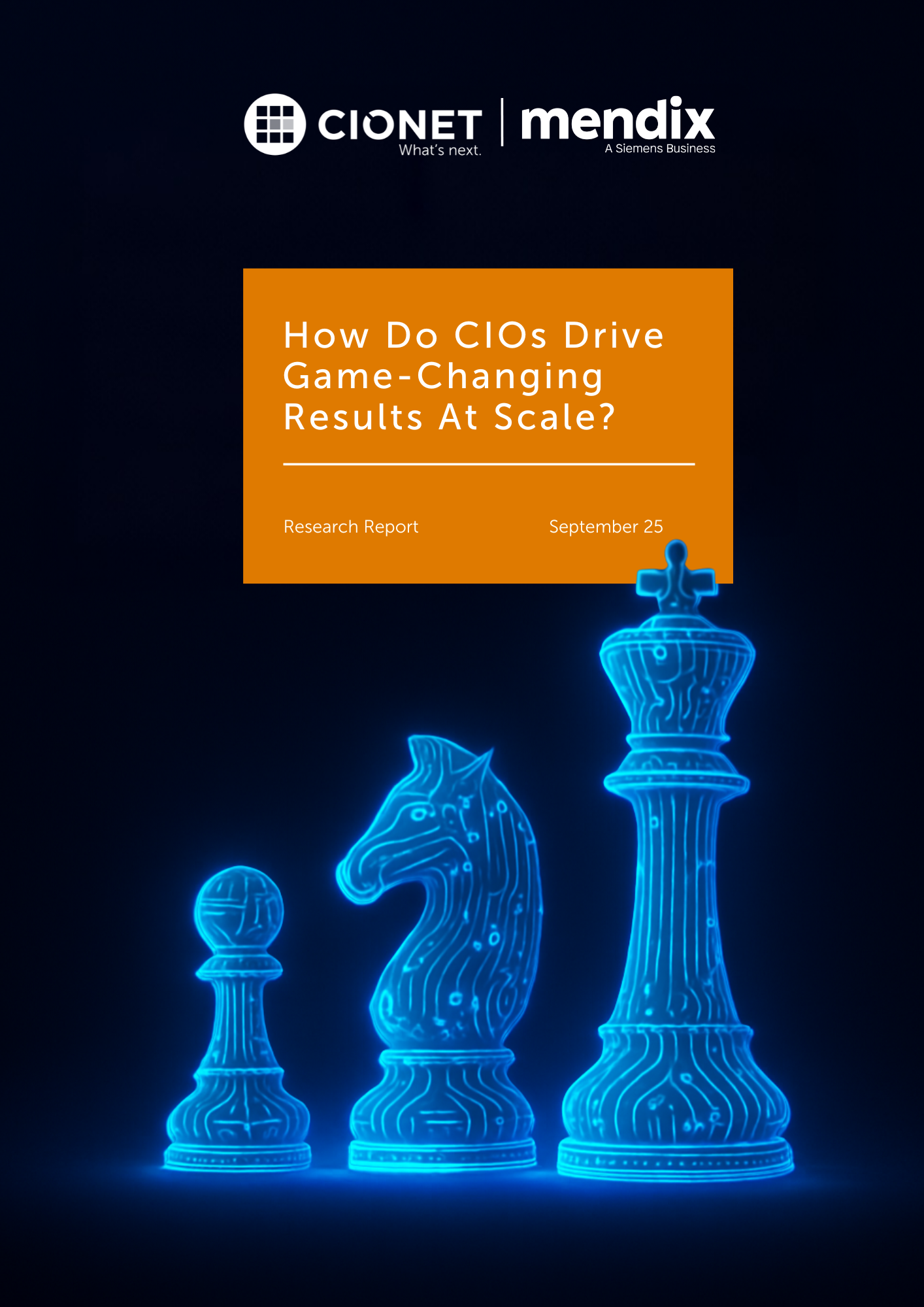
The role of the CIO has evolved from managing systems to shaping outcomes: growth, resilience, and competitive edge are now won or lost in the technology arena. Today ’ s CIOs must balance stability with innovation, control costs while attracting scarce talent, and modernise legacy infrastructure while adopting emerging technologies.
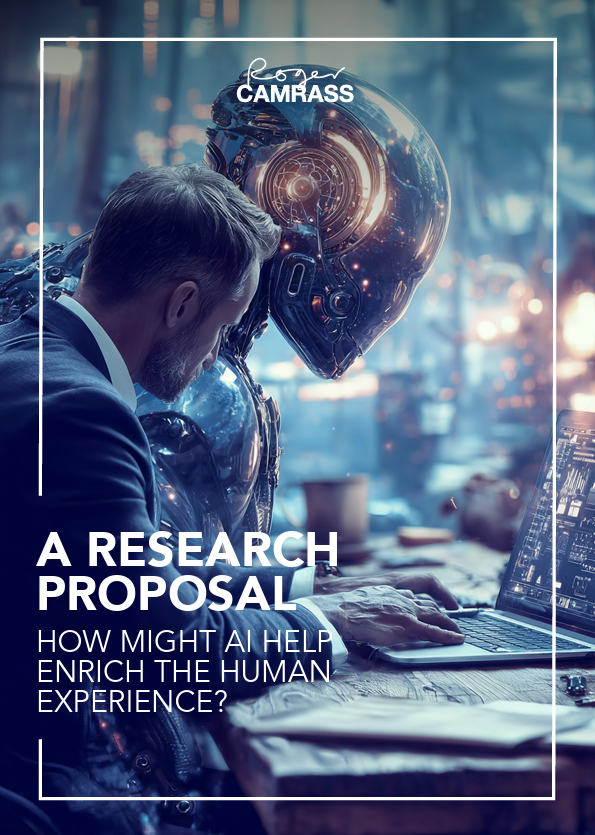
As AI transitions from a specialised tool to an all-pervasive force, understanding its profound implications for our human lives is no longer merely academic but an urgent imperative for social well-being and strategic preparedness.

Geopolitical tensions have dominated the headlines for over two years now. In this context, the cyber threat landscape is also evolving rapidly. The protection and security of critical infrastructure – both physical and digital – is becoming increasingly important.
In our new app, our members connect with other digital leaders from around the world to find better solutions to their challenges.
Connect with digital leaders like you
Share ideas, best practices, and new resources
Experience inspiring and thought-provoking content and conversations you can’t find anywhere else
Make better, more well-informed decisions about the topics that are most important to you
.png?width=600&height=600&name=Anna%20Kopp%20(1).png)
Head of IT Germany and Regional Office Lead Munich, Microsoft

IT Director, IT Thinker

Vice president IT & Compliance, VisionaryRCM (A Carlyle Grp Company)
CIONET’s mission is to help IT executives become more at ease and above all more successful in their jobs. So they can do more than just keep up with change but ultimately define it. CIONET opens up a whole new universe of opportunities in IT management.
With the largest membership of corporate digital leaders across Europe, Latin America, US and Australia, CIONET has the expertise and pioneering vision to solve or address any IT management challenge.
From our local and global events, from our publications and research to our executive education programmes, everything we do is aimed at making sure digital leaders maximise their potential.
with digital leaders who share your interests, who face the same challenges, who care about the same topics.
stories, experiences, and ideas around our shared mission.
from our exclusive events, publications and research.
inspiration, thought-provoking conversations, expert perspectives and exclusive first-hand content each and every day
and make better, more well-informed decisions on how to lead your digital business.
your potential. Realise your ambitions.
You can either send us a registered handwritten letter explaining why you'd like to become a member or you can simply talk to us right here!
Would you like to know more about CIONET, membership or partnership opportunities? Do you have feedback or any other question? Send us a message!